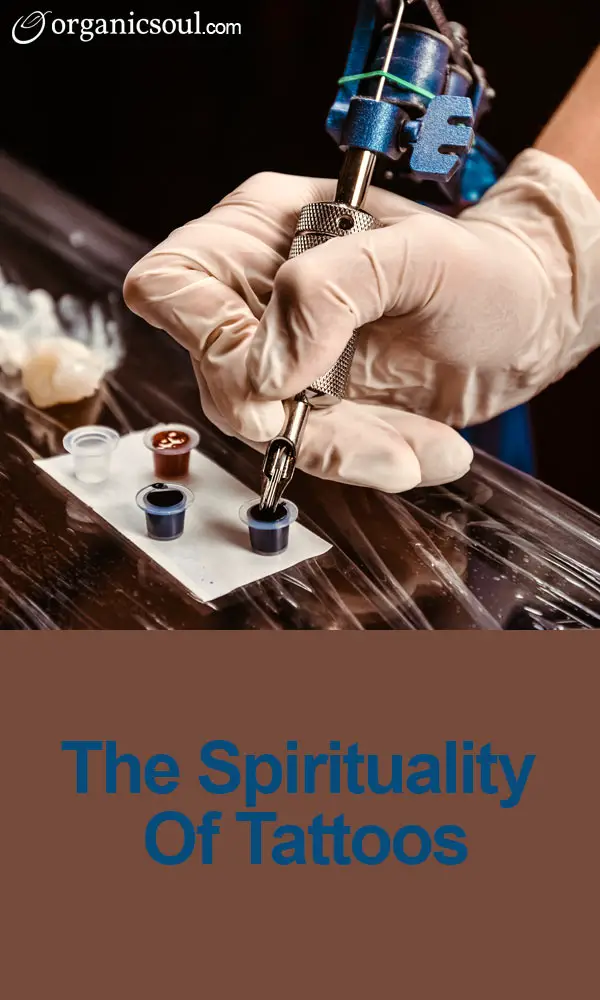Even in the 21st century, body art and tattoos remain to be taboo to many westerners. Major religions directly forbid it, see Leviticus 19:28, and even some secular people shy away from the stigmatized form of expression. That’s not to say, however, that the rest of the world shares these sentiments, or that people simply get tattoos for fun or recreation.
Like Organic Soul on Facebook
The art of tattooing has itself been around for thousands of years. While it’s impossible to know the exact date of origin, 5300-year-old Oetzi the Iceman – an ‘in ice’ mummy found in 1991 – is the oldest wearer of tattoos.
There still is a debate over what Oetzi’s tattoos meant – ritual, medicine, or pleasure – but there are two things that can be deducted nevertheless: tattoos are an ancient form of art, and they serve a number of purposes. In many tribes, from West Africa to the islands of the Pacific, one such purpose of tattooing is to take the step into adulthood, and for women, become suitable for marriage and family life.
Ancient Practices
In Papua, New Guinea, a breed of ancient tattooing is dying. Tribes like the Motu, Waima, Aroma, and Hula once dominated the coasts, and their people once religiously followed their customs. Men displayed prominent tattoos on the chest, related to their success in the headhunt and with motifs (designs or figures) of the heavens and nature. Women, on the other hand, were tattooed from head to toe in order to prove their worth.
As part of a ritualistic ceremony to become an adult, women would spend hours of each day – for sometimes weeks at a time – having a lemon tree thorn hammered into their skin, until the wounds were raw and bloody. The tattooist would then rub the flesh with a mixture of water and charcoal. After mixing with the blood, the ash permanently marked the skin.
This represents something much more than style. First, the tattoos reflect a staple of the New Guinea culture, and while the practices are not widely followed like in the past, the knowledge is still passed down generation to generation. At the same time, the motifs incorporated into the art represent the spiritual nature of the tattoos. When a tribe’s member was tattooed with a symbol, be it the stars or a predatory animal, a spiritual power was lent to him or her. The tattoo means a sort of protection from intrusion by evil spirits, and a cleansing of the soul.
The frigate bird is noted to be one of the most popular motifs, and not just among the tribes of New Guinea. In fact, the symbol extended to places like Rapa Nui (Easter Island). The frigate bird is connected to the Tangata-Manu, or the Birdman deity, and in some cultures represents “the host of the spirit of the dead.”
While the traditions of New Guinea are slowly beginning to dwindle, other tribes in the world continue their tattooing with vigor.
Continued In The Present
A ritual similar to that once found in New Guinea exists among the Fulani, a tribe in West Africa and the largest nomadic group in the world. Unlike the Motu or Waima, the Fulani’s traditions are alive and well today.
One difference often mentioned by experts is that, unlike other African tribes, the Fulani put a huge emphasis on beauty. One way of expressing this is through tattooing. Like in New Guinea, the Fulani have a ritual for when a girl becomes a women and acceptable for marriage.
Usually in a single sitting, a Fulani tattooist will prick the face of a tribeswoman hundreds of times with a razor sharp tool. As the face begins to bleed, the pre-drawn designs, heavy with ink, mix and stain the skin. While the process shows one’s beauty, it also endows one with heightened spiritual ability and prowess.
Women receive symbols of eyes on their temples – allowing them to keep watch on their husband, even when he is out of physical sight. Another sign, a hair prick, is tattooed on their cheeks to represent beauty. Next, an “X” is marked between the eyes, to symbolize the permanent union between her and her husband. And finally, cow tracks are marked across her cheeks, to symbolize prosperity and the migrant ways of the Fulani.
Tattooing And Spirituality
Unlike organized religion or a specific dogma, spirituality often refers to one’s personal journey: a pursuit of self-edification or betterment. To many people, both around the world and in the “west”, tattooing offers that level of personality. Even if tattooing doesn’t involve a tribal ritual, it serves as a form of expression.
Spirituality exists in a number of ways; sometimes it takes the form of moving meditation or creation, and other times it refers to finding balance. Through tattooing, people become better connected to themselves and better connected to their soul. All over the world, tattooing is an established means of spirituality, and while it may be taboo to some, it is a way of life for others.














